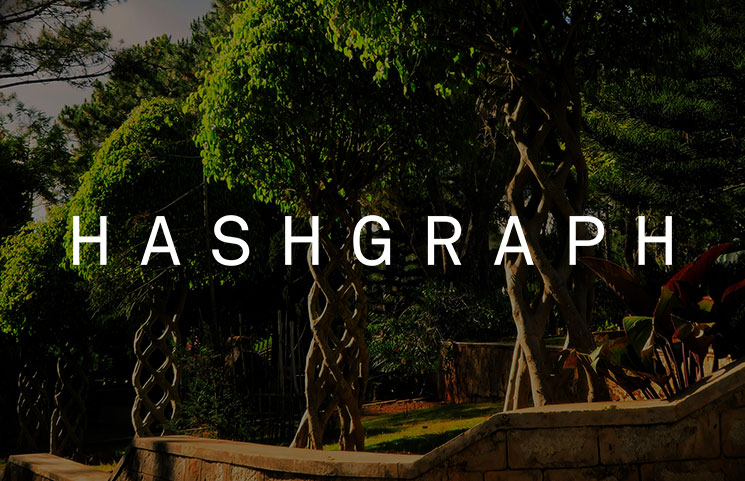Applications
Hashgraph Decentralized Technology Vs Blockchain Distributed Ledger

Hashgraph claims to be the future of decentralized technology due to its superior consensus mechanism and data structure. Find out how it works today in our review.
What Is Hashgraph?
Hashgraph, found online at Hashgraph.com, is a consensus mechanism and data storage solution built on a distributed ledger. That may sound like a blockchain – but don’t call it a blockchain. Instead, Hashgraph could be a replacement for today’s blockchains as the future backbone of consensus algorithms.
The decentralized platform is built to improve on today’s blockchain technology in three crucial ways:
- Fast: Hashgraph offers 250,000+ transactions per second (pre-sharding).
- Fair: Hashgraph offers consensus time stamping that leads to mathematically proven fairness.
- Secure: Asynchronous byzantine fault tolerance offers bank-grade security.
Together, these benefits allow Hashgraph to be used for micro-payments, distributed capital markets, live collaboration apps, distributed MMOs, auctions, and more.
Hashgraph is being developed by the Swirlds team. Let’s take a closer look at how it works.
How Does Hashgraph Work?
Hashgraph achieves consensus without proof of work (PoW). Typically, today’s blockchains use proof of work (PoW) or proof of stake (PoS) consensus protocols. Hashgraph, which isn’t really a blockchain, uses its own unique consensus mechanism that functions in a much different way.
Hashgraph’s proof of work system leads to transaction times that are 50,000 times than most of today’s blockchains. It’s different from the PoW consensus on, say, bitcoin.
Swirlds also claims to have no stale blocks, and that there will be mathematical improvements over today’s blockchains.
One of Hashgraph’s key innovations is called pre-sharding. Sharding has become a trendy term in the cryptocurrency world, as Ethereum developers have been researching the concept of sharding to improve transaction times.
Another key innovation of Hashgraph is the mathematically proven fairness, which means no individual can prioritize transactions based on network fees – like we see with other blockchains.
Ultimately, much of the technology behind Hashgraph is shrouded in mystery. Full details have not yet been released. We do know that the decentralized solution uses virtual voting (which doesn’t require actual votes). Instead, Hashgraph uses Gossip to determine how nodes would vode. In this system, every node knows what other nodes know and at what time they knew it.
The Swirlds development team goes into more detail at the Hashgraph whitepaper here, including their unique Byzantine fault tolerance mechanism.
Meanwhile, if you don’t have a PhD in computer science, you can get a more straightforward explanation of the Hashgraph consensus mechanism here.
How Is Hashgraph Different From Other Consensus Mechanisms?
You can imagine a blockchain has a sequence of blocks, with each block containing transactions.
A hashgraph, meanwhile, can be visualized as a graph that grows upward over time. Every participant keeps a copy of the hashgraph in its memory.
Each member of the network starts by creating an “event”, which is a small data structure in memory. Each event is a container for zero or more transactions. Swirld’s Hashgraph consensus algorithm was built with the goal of allowing members of the community to achieve consensus (agreement) on the order of events, and the order of transactions inside the events, and to agree on a timestamp for each event (and for each transaction). It should be hard for attackers to prevent consensus, or to force different members to come to a different “consensus”, or to unfairly influence the order and timestamps that are agreed.
The community runs a “gossip protocol”, where each member of the network repeatedly calls others at random to sync with them. One node might call another, then sync all events. The nodes keep building on their knowledge in a timestamped way, with the graph extending upward over time.
The end result is a directed acyclic graph that extends upward forever.
This graph is connected by cryptographic hashes – which is why it’s called “Hashgraph” consensus.
Each event contains the hashes of the events below it, and each event is digitally signed by its creator. The graph provides a timestamped consensus of when events took place.
About Swirlds
Swirlds is a software platform designed to host fully distributed applications that harness the power of the cloud without servers. That platform uses Hashgraph as its consensus algorithm. The overall goal is to make a more secure, reliable, fair, trusted, and cost-effective network.
Swirlds is based in College Station, Texas.
Hashgraph Summary
It would be easy to call Hashgraph a new and improved blockchain – but it’s not. It has similar features to the blockchain, because they’re both distributed networks built on consensus mechanisms. However, Hashgraph is designed to be superior to blockchain technology:
“Hashgraph is a radically different approach to distributed consensus,” explains the official website. “This Hashgraph can resolve scaling and security issues, while providing new abilities that enable new applications of distributed consensus.”
To learn more about Hashgraph, visit the official website online at Hashgraph.com.
